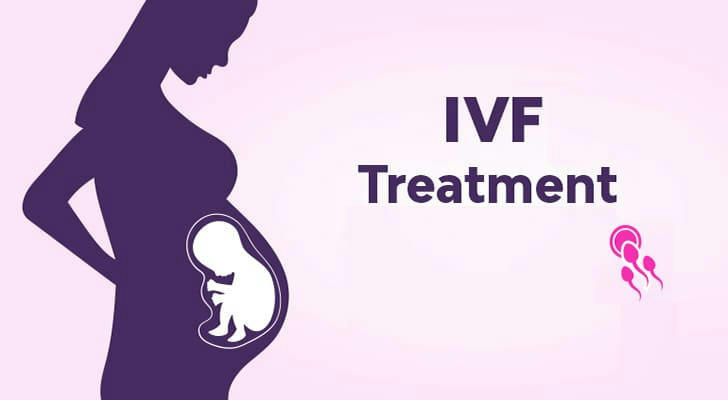The Path to Parenthood: IVF Grants and Charitable Support
✅【Apply online for IVF subsidy】
In the United States, many couples facing infertility are turning to in-vitro fertilization (IVF) for help. However, the high costs often create barriers. Fortunately, numerous financial aid programs and nonprofit organizations now provide support, empowering couples to pursue parenthood.

🌟 Grants and Charities Offering IVF Assistance
1. The Baby Quest Foundation ❤️
Support: Financial grants covering medications, procedures, and consultations.
Eligibility: Based on medical need and financial status.
Application: Online form with medical records, financial documents, and a personal statement.
2. The Gift of Parenthood 🎁
Support: Partial funding for IVF treatment and medication.
Additional Resources: Emotional counseling and peer support groups.
3. American Fertility Association (AFA) 🌟
Programs: Grants to offset IVF expenses for low-to-moderate income families.
Mission: Advocacy for affordable fertility treatments.
4. Fertility Within Reach 🌉
Initiatives: Loan programs, grants, and crowdfunding platforms.
Focus: Educational workshops to help couples navigate financial planning.
5. Paying for IVF 💰
Resource Hub: Directory of grants, scholarships, and cost-saving strategies.
🩺 Understanding IVF Treatment
IVF involves multiple stages:
Ovarian stimulation
Egg retrieval
Fertilization in a lab
Embryo transfer
Age-Related Considerations for Over 45s:
Reduced ovarian reserve
Higher risk of chromosomal abnormalities
Potential health complications during pregnancy
Specialized clinics tailor protocols for older patients, often recommending donor eggs or preimplantation genetic testing (PGT-A) to improve success rates.
🏥 Choosing the Right IVF Clinic
Key factors to evaluate:
Success rates for comparable age groups
Availability of advanced technologies (e.g., PGT-A, vitrification)
Multidisciplinary medical teams with geriatric fertility expertise
Prospective patients should inquire about:
Donor egg programs
Genetic screening options
Post-treatment support for high-risk pregnancies
🧠 Challenges and Considerations for Over 45s
Medical Risks
Gestational hypertension
Gestational diabetes
Preterm birth probabilities
Emotional and Financial Planning
Multiple IVF cycles may be required (average success rate: 15–20% per cycle for ages 45+)
Insurance coverage limitations in most U.S. states
Support Systems: Counseling services, financial aid navigators, and peer mentorship programs are critical for long-term resilience.
💙 IVF for Over 45s: Success Stories and Advances
Recent advancements enable older adults to pursue parenthood:
Mitochondrial supplementation to enhance egg quality
Time-lapse embryo imaging for selecting viable embryos
Egg freezing for future use (available for women up to age 45)
Clinic Selection Tips for Over 45s:
Verify clinic-specific success rates for patients aged 45+
Confirm availability of third-party reproduction options (donor eggs/sperm)
Prioritize clinics with maternal-fetal medicine specialists
✅ Online Application Guide
Research Programs: Use platforms like Fertility Within Reach to compare opportunities.
Prepare Documents:
Medical history (diagnoses, prior treatments)
Tax returns or bank statements
Personal narrative (treatment journey and goals)
- Submit Applications: Meet deadlines (typically monthly/quarterly cycles).
❓ IVF FAQs: Quick Guide
1. Cost & Success
Average cost: $12,000–$20,000 per cycle (varies by location/technology).
Success rates: 40–50% per cycle for women under 35; drops to 10–20% over age 40.
Tips: Use tools like [FertilityIQ] to compare clinic success rates.
2. Process Overview
Timeline: 2–3 months (tests → meds → transfer).
Key steps: Egg retrieval (15-min outpatient procedure), embryo transfer (painless).
3. Physical/Emotional Tips
Side effects: Mild bloating (60%) or breast tenderness (40%).
4. Long-Term Planning
Frozen embryos: Storage available (fees apply).
Ethical options: Donation programs for unused embryos.
5. Challenges
Recurrent failures: Advanced genetic testing (PGT-A) improves odds.
Insurance gaps: State programs (e.g., California’s Fertility Coverage) may help.
6. Next Steps
Research: Compare clinics via.
Finance: Explore for medical expenses.
Consultation: Initial REI consult at top centers (e.g., Shady Grove Fertility).
Data sourced from SART/CDC reports. Clinic-specific info should be verified directly.
🌈 Conclusion: Empowerment Through Resources
While IVF challenges for those over 45 are significant, evolving medical technologies and robust nonprofit support systems create new possibilities. Couples are encouraged to:
Leverage multi-cycle discount programs from clinics
Explore state-specific Medicaid waivers for fertility treatments
Engage with advocacy groups like Resolve: The National Infertility Association
Note: Programs may prioritize married heterosexual couples; single applicants and LGBTQ+ families should confirm eligibility criteria.
